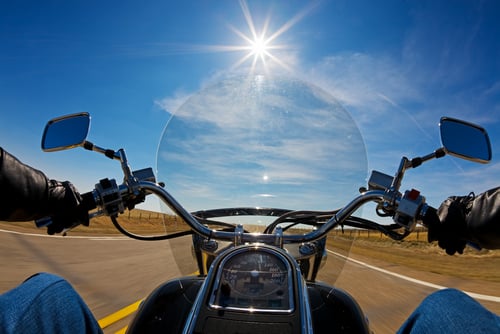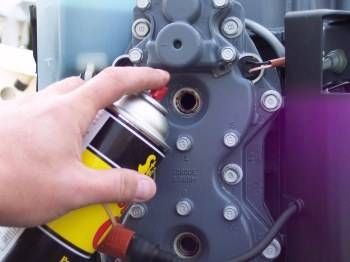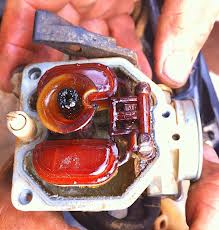Choosing the Right Type of Fuel for Your Motorcycle
There’s nothing like riding a motorcycle on the open road. For most of the world, the motorcycle or 2-wheel scooter is the most common form of...
Most motorcycles made since 1980 are pretty reliable if they’re maintained properly. To some extent, the high reliability of today’s motorcycles has worked to the disadvantage of many riders, with some of them being lulled into believing that motorcycles are like modern cars that require little maintenance. Sure, today’s bikes require less maintenance than they did in the 60s and 70s but they still need a lot more maintenance than a car.
Manufacturers recommend that motorcycles be serviced at specific mileage or time intervals. The suggested maintenance intervals are listed in the owner’s manual to help owners and technicians set up a realistic and appropriate maintenance schedule.
![]() The fuel system of the motorcycle is an important area for preventive maintenance. First, you want to check the fuel filter (if you have one) to make sure it is not clogged, looks clean, and is clear. Fuel filters should be replaced every 2 years, or replaced sooner if you have any signs of contaminated fuel. Check the fuel lines for weather damage and cracking and replace them immediately if any signs of damage are found.
The fuel system of the motorcycle is an important area for preventive maintenance. First, you want to check the fuel filter (if you have one) to make sure it is not clogged, looks clean, and is clear. Fuel filters should be replaced every 2 years, or replaced sooner if you have any signs of contaminated fuel. Check the fuel lines for weather damage and cracking and replace them immediately if any signs of damage are found.
Like your lawnmower, if you’re parking your motorcycle for any extended length of time, remember to turn the petcock or fuel cutoff switch to the off position. This prevents any fuel from potentially leaking or flooding the carburetor. The fuel that is drawn in when you change your petcock setting from “Normal” to “Reserve” comes from a different part of the tank, usually from the very bottom. This is the place where phase-separated gasoline (a layer of water + ethanol) and any other foreign matter will be located. This could mean that the very first time you need your reserve fuel your motorcycle just stops dead because this contaminated fuel would be drawn into the carburetor or fuel injection system. To lessen the chance of this happening, drain the tank or treat the gasoline with a good ethanol stabilizer like Ethanol Defense. Another way to help combat this is to ride on the reserve setting with a full tank of fuel on occasion. The ratio of contaminated-to-good fuel will be so small as not to be as much of a problem. This will also mean that the day you need your reserve – it will work!!
When preparing to store a motorcycle for an extended period of time, you should take certain steps to reduce the chance of problems. The following items are recommendations to ensure that when the next riding season arrives, your motorcycle will be free of problems and ready to go.
The first thing is to change the oil and filter. (You may want to learn about motorcycle oil additives here.)
If the motorcycle is liquid-cooled, be sure that the cooling system is filled with a 50 percent antifreeze solution to prevent the cooling system components from freezing.
Fill your fuel tank with gasoline and add a fuel stabilizer like Ethanol Defense. A good stabilizer will prevent corrosion to fuel system components and keep the fuel from deteriorating during storage.
Drain the carburetor, if possible, or turn the fuel petcock to the off position. Run the engine until all the fuel in the carburetor is consumed and the engine dies.
To prevent rusting in the cylinders, pour a teaspoon of clean engine oil into each cylinder after removing the spark plugs. Place a piece of cloth over the spark plug holes and turn the engine over a few times to disperse the oil and coat the cylinder walls. Replace the spark plugs after completing this operation.
Remove the battery and verify that it is fully charged. Store it in an area to protect it from freezing. You should place the battery on a trickle charger once a month while in storage to prevent it from discharging and sulfating.
If the motorcycle has a drive chain, you should lubricate it to prevent it from rusting.
Inflate the tires to the factory recommended pressure to prevent sidewall cracks or flat spots.
Wash and wax all the painted and chrome parts.
Cover the motorcycle to keep dust and grit from settling on the paint which can result in a scratched finish. It is also recommended to use a cloth cover to avoid any moisture collecting on the cover or the painted or chrome surfaces.
If you want to get the best out of your motorcycle, these are the kind of things you need to do. Following these procedures will reduce the chances of having problems when taking the motorcycle out of storage and ensure that your motorcycle will look as good as it did when you placed it in storage. The result will be an enjoyable riding season when it begins.

There’s nothing like riding a motorcycle on the open road. For most of the world, the motorcycle or 2-wheel scooter is the most common form of...

Now that Labor Day has passed, boating season is coming to an end while cold weather looms on the horizon. The engine is the most expensive part of...

It seems to be a best practice recommendation for motorcycle owners (and other kinds of small engines) to run the engine at least every couple of...